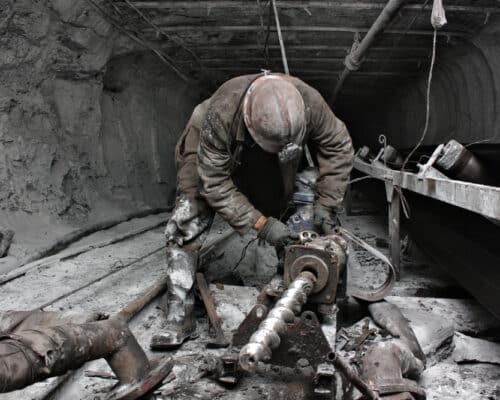Natural Gas

China’s Fossil Fuel Addiction and the Green Transition
China's renewables development leads the world by a more than a two-to-one ratio, but its fossil fuel usage still accounts for more than 50% of its power production needs, creating the world’s highest GHG emissions.
Global LNG Outlook 2023: Is There a Future for LNG?
Global LNG markets will remain volatile for the rest of the decade, negatively impacting Southeast Asia. The region's carbon emissions-intensive gas-to-power build-out exacerbates the problem. With a myriad of problems from LNG and gas-to-power usage, energy economics dictate that renewables development is the best path for Southeast Asia.
Facts About Gas Create A Divide In Its Future
Natural gas continues to be the centre of a global debate. Can it be a viable transition fuel? It is a flexible fuel that produces less carbon dioxide than coal and oil. However, it consists of methane and is not renewable. Understanding the facts about natural gas is critical in untangling this debate.

The Global Cooksafe Coalition and the Mission to Accelerate the Switch From Gas to Sustainable Cooking
Cooking with gas is associated with health, climate and financial concerns. The mission of the Global Cooksafe Coalition is to help households worldwide overcome them by transitioning to electric and induction cooking.
Upcoming LNG Projects in Asia: The Outlook for 2023 and Beyond
Developing Asian countries have felt the financially-devastating consequences of relying on natural gas. Yet, they are planning for a massive buildout of LNG terminals – a move that will lock them in a future of stranded assets, high power costs and energy independence.

LNG’s Stranded Asset Risk in Asia: Warnings, Project Delays and Cancellations
Gas prices are projected to remain high for the next couple of years, while available volumes are to remain scarce. As a result, bringing new LNG projects online in Asia won’t get any easier and more delays and cancellations are potentially waiting around the corner.
Unaffordable Fuel Prices Stall Asia’s LNG Expansion
As high gas prices rock global markets, Asia is facing a permanent contraction in demand for LNG and looking toward other energy sources. Several LNG facilities across Asia could go underused or risk cancellation.
COP27 Egypt and the Outlook For Natural Gas in Asia
COP27 has shown that while gas won't be going away soon, its faith is already determined. And Asian countries should be aware of that.
Is Natural Gas Renewable?
Natural gas is a fossil fuel that has been created in the Earth's crust over millions of years. It is cleaner than coal and oil but primarily consists of methane, which is a greenhouse gas far more potent for global warming than carbon dioxide. Investing in natural gas is not a viable long-term alternative to other fossil fuels. Yet, it can act as a "transition" fuel to bridge the energy gap to renewables in the short term.
San Miguel Corporation’s LNG Projects and their Implications for the Company and the Philippines
Natural gas has successively been shown to oppose the goals of solving the energy crisis. It causes environmental issues and won't help the Philippines decarbonise. Gas is now an impractical choice for the San Miguel Corporation, the regions biggest LNG developer.
How To Improve Indoor Air Quality – 7 Effective Ways
There are a complex and broad array of air pollutants, which make indoor air pollution a challenging global issue to tackle. However, there are some actions we can each take to directly improve our immediate air quality, like increasing building ventilation. Additionally, increasing education on sources of air pollution will help make a societal change in the communities that most need it.
The Outlook for Electric Cooking in Asia
Many low-income households in developing Asia continue to use wood as the primary fuel for cooking. Despite the sufficient amount of electricity access, for most middle and high-income households across developed and developing Asian countries, gas and LPG remain the preferred choice. Governments have to stimulate the transition to electric cooking to help households ensure more affordable and cleaner cooking.
The Rise of Electric Cooking
Natural gas has several adverse side effects on our health and the environment when used for cooking. Electric cooking represents a significant improvement in both of these categories. However, gas cooking rates remain high, which needs to change. Understanding the advantages and disadvantages of electric cooking is crucial in facilitating the shift away from gas systems.

More Cities Are Banning Natural Gas In Homes: But Why?
Natural gas produces a range of pollutants associated with health issues and climate change. As a result, cities are starting to consider banning natural gas infrastructure in new buildings. So far, US cities are leading the charge, but there has been significant pushback from major natural gas companies.
Most Popular
Categories
-
9
-
33
-
126
-
4
-
17
-
43
-
52
-
11
-
10
-
15
-
24
-
6
-
6
-
247
-
195
-
13
-
23
-
1
-
1
-
23
-
38
-
41
-
84
-
18
-
81
-
41
-
17
-
10
-
40
-
43
-
86
-
284
-
21
-
39
-
35
-
10
-
41
-
36

